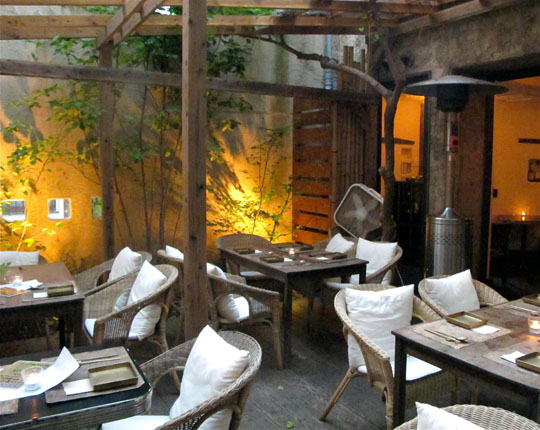Even among the architectural mishmash of Tokyo's jumbled backstreets, Bissori stands out. The two-story facade is sheer, rough-plastered, almost windowless. Creepers and bamboo obscure the few small square portholes. It's intriguing, enigmatic. Inside, though, is even more remarkable.
Entering the narrow arched postern, you pass through a small half-timbered antechamber to find yourself once again in the open air. Almost all of the original structure — walls, ceiling and roof — has been removed. What's left is an open patio, subtly illuminated, fringed with shrubs and, spanning the sky overhead, a handsome full-grown cherry tree. This is the main dining room at Bissori and it's magical.
What lends it extra charm is that this secret garden is not manicured and tidy. There's a comfortable roughness, a sense of nature on the verge of running wild. It's not Angkor Thom overgrown by any means; the aesthetic is more European romantic than Japanese wabi-sabi.



















With your current subscription plan you can comment on stories. However, before writing your first comment, please create a display name in the Profile section of your subscriber account page.